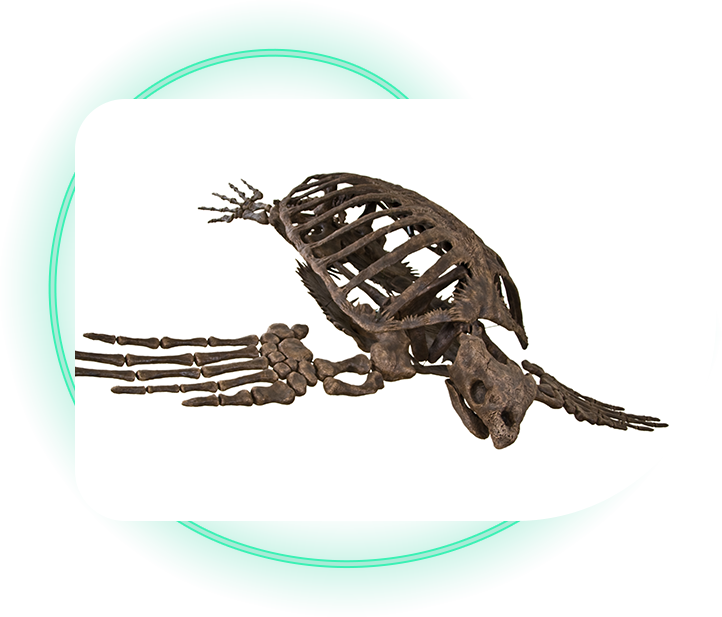Favorite CollLection Triceratops Real Figure Keyring
$11.95

The original fossil specimen of this largest of the World’s turtles was collected from the Pierre Shale of South Dakota in the mid 1970’s. Some initial preparation and stabilization of the specimen was done at that time by Peter Larson of the Black Hills Institute for Siber & Siber of Zurich, Switzerland. This partially prepared specimen was eventually purchased by the National Natural History Museum in Vienna, Austria. Museum staff completed the preparation and mounted the Archelon for display as the centerpiece exhibit in that museum where it remains to this day.
Dr. Kraig Derstler of the University of New Orleans, who has studied this specimen extensively, reports that: “Without exaggeration, the Vienna museum specimen of Archelon ischyros is one of the world’s great fossils.”
The most often heard comment from visitors is a reference to its very large size. Young and old alike, even those who have seen many large dinosaur and mammal mounts, are awed at the size of the Archelon. Since the sea turtles living in our oceans today are fighting for their survival, the Archelon is an especially poignant exhibit and serves as a reminder of Earth’s many endangered species.
Cast replicas of the original fossil skeleton of Archelon ischyros owned by the National Natural History Museum in Vienna, Austria are produced by Black Hills Institute of Geological Research, Inc., under a special agreement with the Vienna Museum.